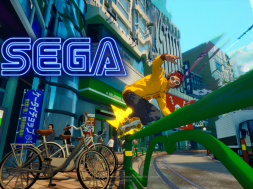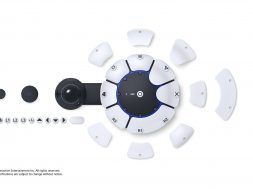I play a lot of games.
Games have been a part of my life as far back as I can remember and although I consider the medium to be as intrinsically linked to my personality as my love for music or my perpetual cravings for Hagen Dazs, I’m not really sure I’ve ever stopped to ask myself why I think that is. Even here in 2013, games still carry with them the remnants of their former stigma. Despite massive leaps forward in both presentation and design, despite the artistic aspirations of decades worth of designers, despite the fact that the average gamer in 2013 is aged between 24 and 30, many people still regard games, anime, cartoons, card games and other nerd-like past-times, as kids stuff.
In my six months as a 25 year old I’ve come to realize that for some reason people like to refer to me as an adult now and it’s often left me wondering whether or not my ‘adult’ life has any room for the worlds and characters I love so much. These stories have, in some way, shape or form, all helped to mould the person I currently am; guiding my fragile young mind toward pathways to thoughts and philosophies that I’ve since embraced or rejected entirely. It seems unfair to expect me to abandon them because I’ve passed some arbitrary age limitation.
If I still take enjoyment from these works, if I still find myself in a position to be moved or touched by a game, an Anime or anything else, in the same way most ‘proper adults’ would be by books, presumably, why should I resign them to the past? A good story will move and inspire its audience whether its written in lines of text on a page or lines of code on a disc. It could even be something as simple and meaningless as a string of anonymous forum posts in 2006.
In December 2006 a story appeared on the infamous 4chan imageboard supposedly from a male-nurse who had taken it upon himself to care for a 7 year old orphan girl who also happened to be a triple amputee, possessing only her left arm following a car accident which claimed the lives of her entire family. While the trademark 4chan ugliness didn’t take long to show itself in the form of crude jokes and suggestions, among the responses were scattered offerings of sympathy and genuine interest which, it would seem, caught even the original poster, dubbed affectionately as ‘Nurse-kun’, off guard.
While the story could never have, and has never been verified, its effect on the community was far reaching enough for someone to unearth a concept page by a doujinshi artist named RAITA, detailing rough character designs and an idea for a computer game set in a school for the physically challenged. Not long after the image had been posted, a collective of anonymous posters decided to take it upon themselves to make the concept a reality. The team of 21 developers, artists, writers, animators and musicians came together from across the world to form 4 Leaf Studios and devoted five years of their lives to creating the game that RAITA had briefly envisioned. This is the bizarre chain of events that lead to one of the most emotionally poignant games I’ve ever had the pleasure of experiencing; Katawa Shoujo.
Katawa Shoujo, roughly translated as ‘Disability Girls’, is the story of a boy named Hisao who, in the early years of his adolescence, discovers he suffers from a serious heart condition, one which could potentially kill him if not properly medicated. His carefree teenage life is brought to an abrupt standstill by a year in hospital recovering from the heart attack which revealed his Arrhythmia, and is seemingly lost to him forever when he is told he can’t return to his old school and instead must continue his education in Yamaku, a school setup specifically to cater to students with disabilities. He enters the gates at Yamaku burdened by prejudices and preconceived notions about both the students he’ll find there and his own ability to accept his new life.
In the first chapter of the game, Hisao will meet the 6 main female characters; Shizune, the student council president and her best friend, Misha, the introverted and mysterious Hanako, her only friend and social guardian Lily, an enthusiastic track star named Emi, and Rin, an aloof, artistic spirit with a natural talent for painting. Over the course of the first chapter, Hisao will interact with all of these characters (as well as some ancillary ones) and the player, by making seemingly innocuous decisions, will determine which of them he befriends, alienates and possibly falls in love with.
In this regard, Katawa Shoujo would appear to be just another visual novel style dating sim and in terms of gameplay, that’s pretty much exactly what it is. That said, the choices you’re offered are usually tremendously subtle, never giving any hints of the true consequences they may cause. Initially, this allows for some pretty thoughtless decisions and in your first playthrough, you might not even know who you’ve decided to court until the game explicitly tells you. In the later chapters however, the far reaching implications of these choices force you to think long and hard about even the smallest of them. Katawa Shoujo isn’t the first game to do this, not by a long shot, but it’s in this mechanic that its setting becomes truly important and reveals itself to be more than the fetishizing monstrosity it very well could have been.
It’s often said that some works of art only give to you as much as you give to them. Journey, which I have previously written about, is one of these games; everyone will interpret it differently based on their own life experiences and where they are in their life by the time they come to it. Katawa Shoujo is also one of these games. Each of the girls mentioned previously are physically challenged in someway and the disabilities chosen are far from arbitrary. Rin, our painting prodigy, lost both her arms to a birth defect and paints masterfully with her feet. Emi, the star athlete, runs track using prosthetics having had both her legs amputated below the knees years prior. Shizune, despite how aggressively and authoritatively she speaks, cannot actually speak at all as she is deaf and mute, instead speaking in sign language through Misha, who also happens to be her interpreter. Lily is blind and that could very well be the reason Hanako has chosen to befriend her, as Hanako bears horrific scars, both physically and emotionally, from an equally horrific incident in her childhood.
Although Hisao is initially unsure how to behave around these people, frequently wondering aloud whether or not to acknowledge their conditions, he eventually realizes that he is the one with the problem and his relationships with each character force him to look inward for answers.
In each of the routes, Hisao will be forced to come to terms with a part of his own personality.
The disabilities become less a definition for each character, and more a metaphor for one aspect of universal struggle. Can you see things from a perspective that conflicts with your own? Can you truly accept people for who they are and allow yourself to be accepted in return? Can you commit to your choices and find the drive to follow your ambitions? Can you face your fears? Can you seize the day? Each of these stories had moments that forced me, as the player, to reflect on my own life; my own fears, ambitions and prejudices. It made me question my view of the world and the way I want to behave in it.
Katawa Shoujo is a story about flawed people, just not necessarily in the way you’d immediately think.
If the fandom is any indication, I’m not the only person to have this kind of experience with Katawa Shoujo. Countless threads on countless forums and reddit pages all recount similar stories of self discovery, some general and appreciative, others specific to one character and gratefully devoted, which once again made me think about why adults in 2013 are so quick to fall in love with fictional worlds and characters. It seems to be a symptom of being what the masses refer to as ‘geeks’ or ‘nerds’, that we attach ourselves to and empathize so strongly with these imaginary people.
The kind of devotion it takes to collect figurines or tattoo iconography into ones skin is not something everyone will appreciate or understand, but does that make it invalid? I think the reason we fall in love with characters like Emi or Shizune is the same reason we fall in love with our friends and lovers; in them we see elements of ourselves. Our past, our mistakes, our present, our hopes, our ambitions and our potential. We want to make them happy because we are them and they are us. The distinction then comes down to whether or not it matters that we love characters who aren’t real and to that, I say this:
Katawa Shoujo, a free game developed internationally by a team of amateurs, inspired by one page of concept art, discovered through one bizarre story on an imageboard, has a bigger following than anything I’ve ever done and potentially may ever do. Emi, Shizune, Lily, Hanako and Rin have touched millions of lives in ways that I don’t think I ever will. Long after I’m dead, people may still download Katawa Shoujo and experience a year in the life of Hisao at Yamaku. They might even be moved enough by it to write another piece similar to this. These characters and worlds are fictional, yes. But given the way they touch us, move us and inspire us, what right have we to say they aren’t real?












